The Tragic Fate of the Radium Girls and the Dark Age of Radiation in the 1920s: How Radium Corporations Sacrificed Young, Beautiful Women for Profit.H
Imagine a time when glowing wristwatches were the epitome of modern marvels, their dials shimmering in the dark like tiny stars. A century ago, this “magic” captivated the world, but behind the glow lay a chilling story of sacrifice and betrayal. The “Radium Girls,” young women who painted these luminous dials, became unwitting victims of a deadly element—radium. Their story, both heartbreaking and inspiring, reveals the cost of unchecked scientific enthusiasm and corporate greed. This analysis delves into the rise and fall of the radium craze, the devastating health impacts on the workers, and the legal battles that reshaped workplace safety, offering a timeless lesson in responsibility and justice.
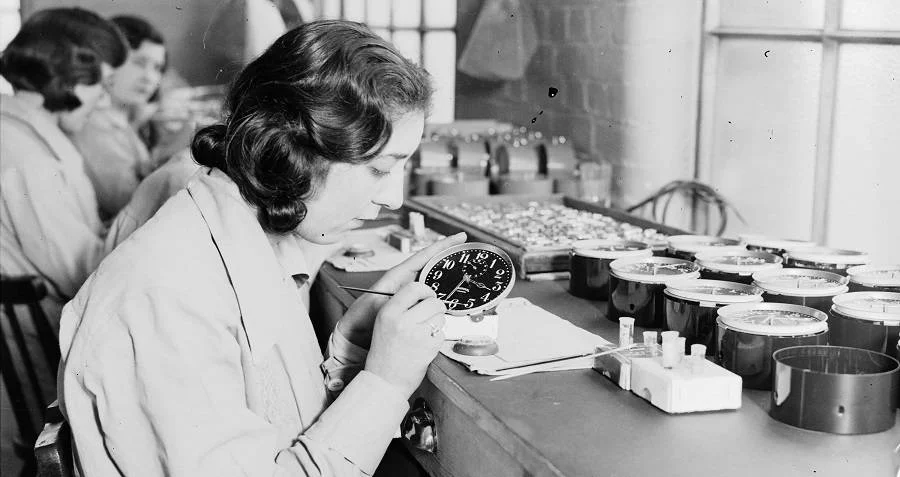
The women painting alarm clock dials at the Ingersoll factory in January 1932. Photo: Getty Images
The Allure of Radium: A “Miracle” Element
In 1898, Marie and Pierre Curie discovered radium, a radioactive element that sparked a global frenzy. Hailed as a miracle cure, radium was used in cancer treatments and quickly became a sensation, marketed as a “wonder drug” akin to modern-day vitamins. As historian Kate Moore notes in The Radium Girls, “People were mesmerized by its power.” Companies infused radium into everyday products—toothpaste, cosmetics, even water, like Radithor, a beverage touted as a cure for everything from asthma to gout. A 1924 advertisement for radium-laced hair tonic promised vitality, reflecting the era’s blind faith in this glowing substance.
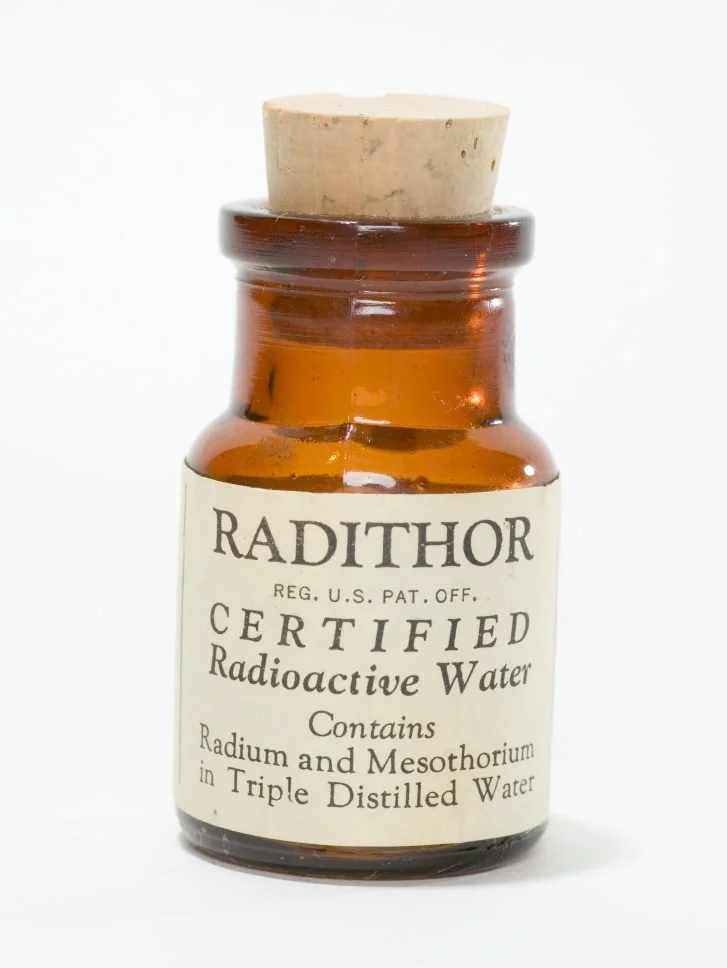
A bottle of “radium miracle water” brand Radithor. Photo: Getty Images
Yet, this fascination ignored early warnings. By 1901, Pierre Curie himself cautioned that radium could burn skin and potentially kill if mishandled. Despite this, the public and industries embraced radium’s glow, unaware of its lethal nature. The element’s mystique drove demand for glowing watches, particularly during World War I, when their utility for soldiers made them a must-have accessory.
The Radium Girls: Victims of a Deadly Craft
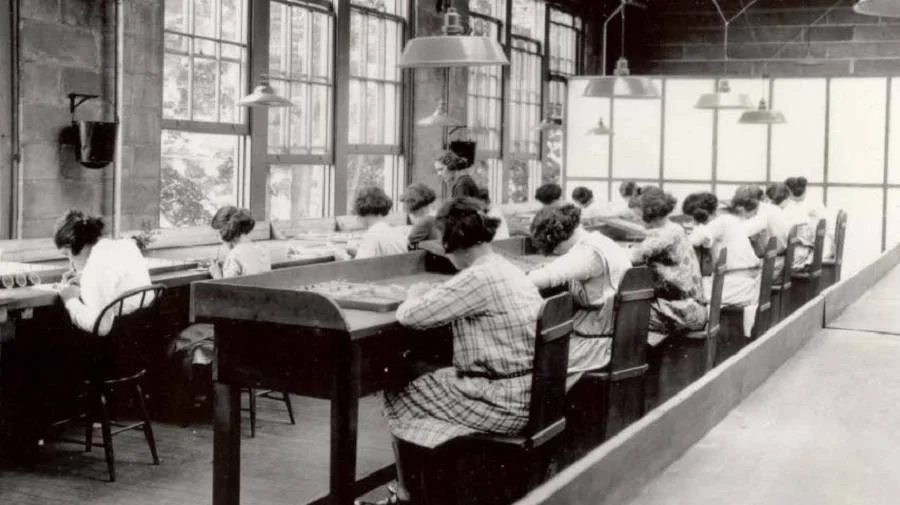
The “Radium Girls” diligently worked in the factory, unaware of how radium exposure would devastate them. Photo: Wikimedia Commons
In 1916, factories like the United States Radium Corporation (USRC) in New Jersey began producing these glowing watches. They hired young women, often teenagers, to paint tiny watch dials with radium-based luminous paint. The job was prestigious, offering high wages and a sense of artistry. Workers, dubbed the “Radium Girls,” were instructed to shape their paintbrushes with their lips, a technique called “lip-pointing.” Employers assured them the paint was safe, but each brushstroke exposed them to radium, which they ingested daily.

An advertisement image for radium-containing hair tonic in 1924. Photo: CNN
Radium, chemically similar to calcium, was absorbed into their bones, mimicking calcium’s role in bone formation. As Timothy Jorgensen, a radiation expert, explains, “High doses, like those the Radium Girls ingested, led to bone necrosis and cancer within years.” The women, unaware of the danger, even embraced the glowing dust that clung to their hair and clothes, making them sparkle like ethereal figures at night. This eerie beauty masked a ticking time bomb.
A Slow and Painful Awakening
The first signs of trouble emerged in 1922 with Mollie Maggia, a 22-year-old worker who fell ill with excruciating dental pain. After losing teeth, grotesque tumors sprouted in her gums, oozing blood and pus. Her jaw disintegrated under a dentist’s touch, a condition later dubbed “radium jaw.” By September 1922, Mollie died at 24, her death certificate falsely citing syphilis—a cruel misdiagnosis that obscured the truth. Other women followed, suffering from crumbling bones, cancers, and blindness, all linked to radium poisoning.
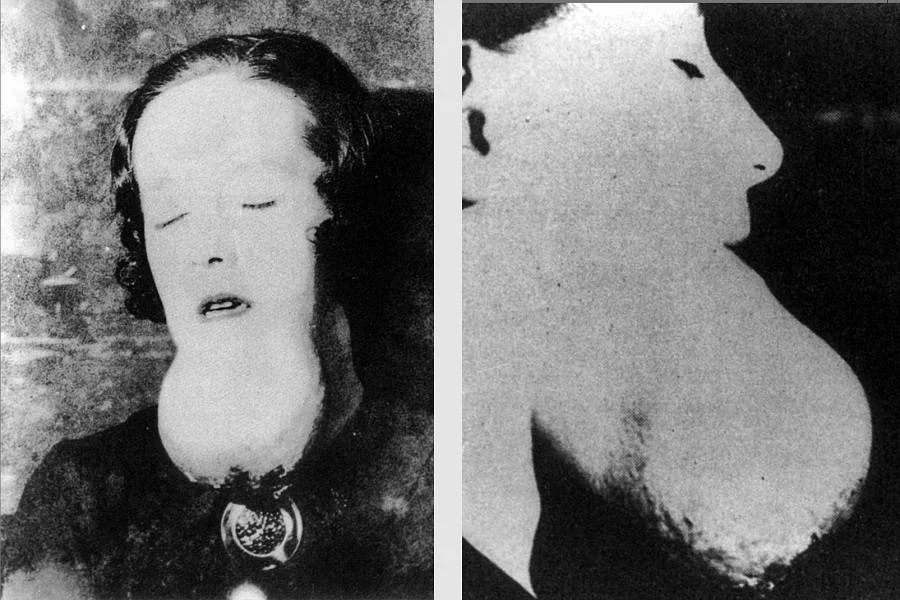
The “radium jaw” symptom, where a tumor grows large on the chin, causing the jawbone to fracture. Patients are typically near death at this stage. Photo: Real Clear Life
Initially, the Radium Girls believed radium was invigorating. They worked proudly, unaware that the world’s most expensive substance—valued at $2.2 million per gram in today’s dollars—was destroying them. The USRC, aware of radium’s risks, denied responsibility, even as workers died. By 1924, public suspicion grew, forcing the company to commission an independent study. When it confirmed radium’s dangers, USRC suppressed the findings, funded misleading studies, and lied to the U.S. Department of Labor.
The Fight for Justice
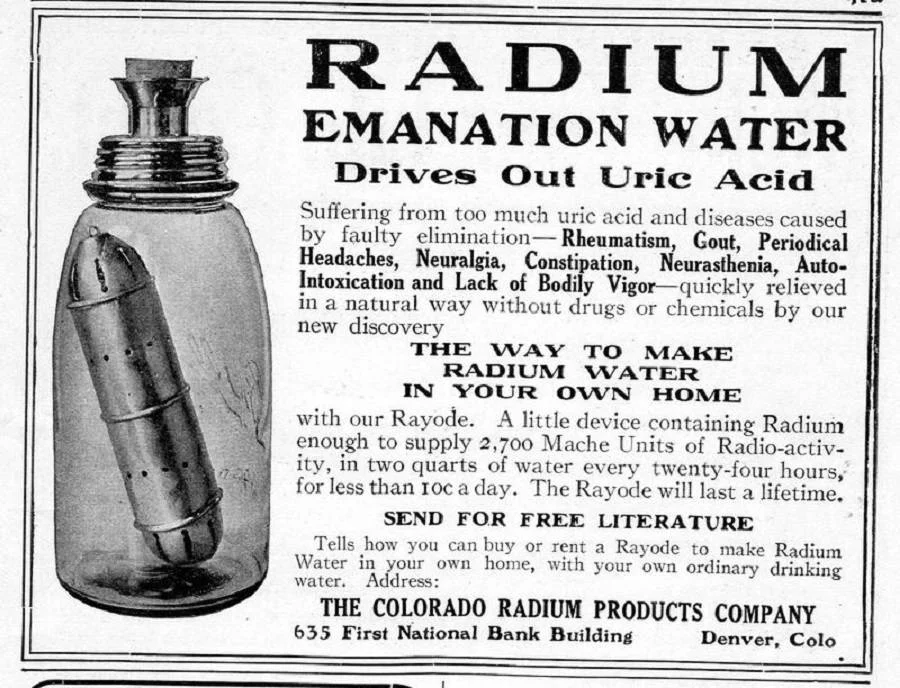
During the era of misconceptions about radium radiation, an advertisement for radium water claimed it “lowers uric acid” and “cures gout.”
In 1925, Grace Fryer, a former USRC worker, launched a legal battle against the company. It took her two years to find a lawyer willing to challenge the powerful corporation. By 1927, she and four others filed a lawsuit, thrusting the Radium Girls’ plight into global headlines. Their challenge was daunting: proving radium caused their illnesses against a prevailing belief in its safety. Dr. Harrison Martland’s 1925 investigation, including the exhumation of Mollie Maggia’s body, provided critical evidence, confirming radium’s role in their suffering.
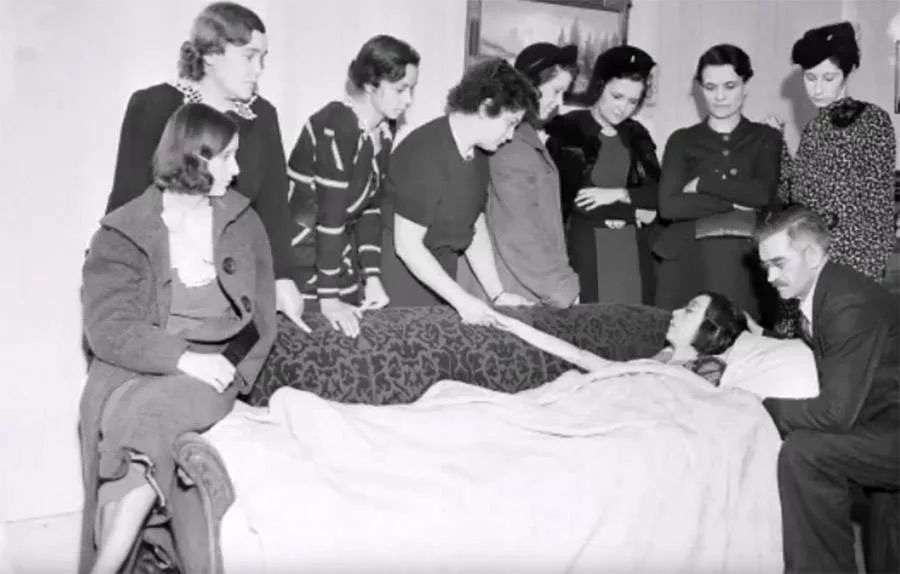
A female worker afflicted by illness due to radium exposure. Photo taken on February 11, 1938 – allthatsinteresting.com
The 1928 lawsuit victory marked a turning point. It exposed radium’s dangers, banned lip-pointing, and mandated protective gear for workers. Though USRC appealed, the U.S. Supreme Court rejected their final appeal in 1939, ensuring compensation for survivors and accurate death records for the deceased. The case spurred labor safety laws, influencing protections during World War II’s Manhattan Project, which benefited from lessons learned about radiation handling.
Legacy and Lessons
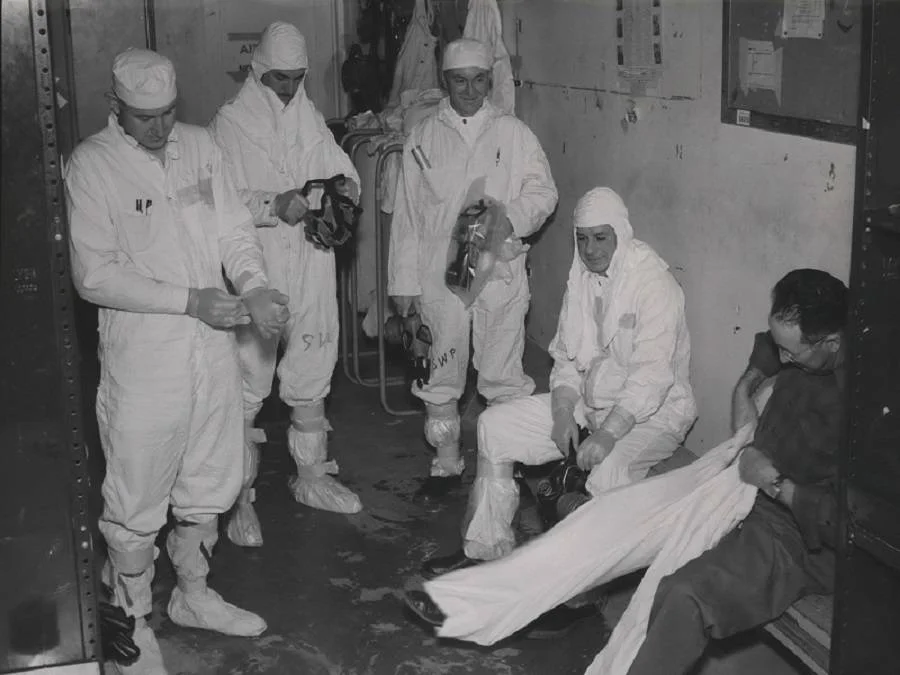
Workers at the Hanford factory of the Manhattan Project wearing protective gear before handling uranium isotopes emitting alpha radiation. Photo: Wikimedia Commons
The Radium Girls’ tragedy reshaped history. Their fight led to stricter workplace safety regulations and a deeper understanding of radiation’s risks. By 1968, radium-based paint was phased out of watch production. Yet, the human cost was staggering—thousands likely suffered, with radium’s 1,600-year half-life ensuring its lingering effects in survivors’ bodies. Mabel William, one of the last living Radium Girls, died in 2015 at 104, a testament to both resilience and the enduring impact of their ordeal.
This story is a stark reminder of the dangers of unchecked innovation and corporate negligence. The Radium Girls’ courage turned their suffering into a catalyst for change, ensuring their legacy glows brighter than the dials they painted.
The Radium Girls’ saga is more than a historical footnote; it’s a powerful narrative of sacrifice, resilience, and justice. These women, lured by the promise of a glamorous job, paid the ultimate price for society’s ignorance about radium. Their fight against a powerful industry sparked reforms that protect workers today. As we marvel at scientific advancements, their story urges us to question the cost of progress and honor those who, like the Radium Girls, illuminated the path to a safer future.



